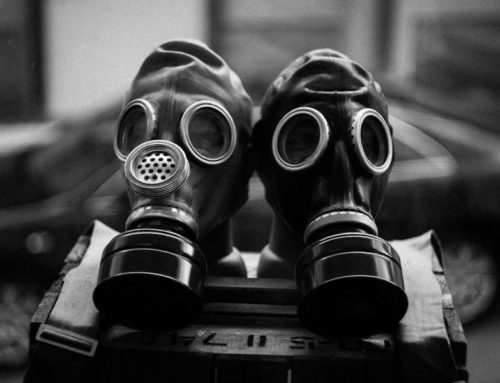Puffy eyes, stuffed-up heads, and swollen ankles are all symptoms that indicate the presence of stagnant lymph. Instead of a dynamic lymph that flushes out toxins, it just sits. Known as lymphedema, the congestion, puffiness, and swelling are the result of toxins and waste products clogging up the only exitways from the body. As you know, stagnation breeds sickness. If you have blocked lymph, what you need is a natural lymphatic detox to help enhance the drainage recovery process. A lymphatic detox will help de-clog and de-stagnate your lymphatic system and get their lymph flowing again to eliminate harmful toxins.
The Lymphatic System for Optimal Health
A lymph test doesn’t exist. You’ll see lots of tests about lymphoma (cancer of the lymphatic system), and there will be information on blood tests measuring lymphocytes (immune cells that the lymphatic system makes). (1)
The fact that there is no direct test of the lymphatic system does not mean it’s not important. And it in no way means the lymph system doesn’t exist. Without a properly functioning (although largely invisible) lymphatic system, people would be drowning in their own waste products. If the lymph remains put, you could develop chronically bloated extremities bursting with lymph leading to other serious health complications. (2)
Importance of the Lymph
Lymph is analogous to blood in that they’re both liquids circulating in the body. But the similarity stops there. Unlike red blood’s circular, pumped by the heart movement, clear-to-white lymph moves just one way: out. To make matters worse, lymph has no organ pump. (3)
So it’s up to individuals to eliminate it themselves through moving and deep breathing because a sedentary lifestyle can take years off life. (4, 5)
Lymph also contains water from blood plasma. It’s important for you to be proactive when it comes to lymph management. (6)
Also unlike blood, lymph is mostly water (95%) with the fancy name of interstitial fluid. This is the water all around and between the cells filled with some immune cells, proteins, fats, and other substances. (7)
Lymph is the body’s liquid trash can. It picks up waste products formed from all the chemical reactions needed to keep people alive, ushering them out of the body. (7)
There’s also a toxic load of environmental chemicals like heavy metals that need to exit the body before they start wreaking biological havoc. (8, 9, 10)
Given that about 80% of the immune system resides in the gut, it should come as no surprise that the gastrointestinal (GI) tract also contains some lymphatic tissue making it part of the lymphatic system as well. (11, 12)
As lymph makes its way to the collection centers (nodes), the vessels carrying it merge. Then they become part of a more extensive, denser network of vessels that eventually morph into lymphatic ducts like small streams emptying into larger ones and finally winding up in a river. (2, 13)
Then the ducts deposit lymph into veins until its final exit through the bladder, bowel, and sweat. (11)
Functions of the Lymphatic System
Ignored and under-rated by medicine and science for far too long, the lymphatic system is now known to have several critically essential roles to play in keeping people healthy. (3, 14, 15)
Researchers exploring this “white blood” (as Hippocrates once described it), discovered that it: (16)
- Absorbs lipids (fatty substances) and fat-soluble vitamins (vitamins A, D, and E) from the GI tract and sends them into the bloodstream and beyond (to the cells)
- Detoxifies against microbes and other toxic substances
- Returns some excess protein molecules and fluid back to circulation
Given how vital these functions are, it makes sense to keep lymph flowing to live toxin-free. But sometimes, blockages can happen.
What Causes Blockages in the Lymphatic System?
One or more of these could be responsible for lymph blockages: (17)
- Cellulitis
- Injury
- Microbial infection
- Parasitic infection
- Radiation therapy
- Removal of a lymph node
- Surgery
- Tumor
You may have experienced one or more of these in your life, resulting in lymphatic blockages.
Note: Many of the examples could indicate a health problem unrelated to the lymphatic system, so always make sure you check with your healthcare provider.
Besides the congested head, puffy eyes, and swollen ankles that signal lymphatic dysfunction, there are more signs and symptoms of lymph blockages that may not be as obvious as fluid buildup. However, they can be severe lymph-related issues just the same. These signs include:
- Bloated stomach or extremities (18)
- Brain fog (19)
- Cellulite (20)
- Chronic headaches (21)
- Chronic sinus infections (22)
- Constipation (23)
- Eczema (24, 25)
- Excessive sweating (25, 26, 27)
- Mucus and phlegm production (28, 29)
- Painful and hard swellings (especially in armpits, groin area, and neck) (30, 31)
- Sluggishness (31)
- Stiff or painful joints (32)
Key takeaway: If you have one or more of these signs of lymphatic blockage, they can’t eliminate toxins.
Here are the natural consequences when one or more parts of the lymphatic system are clogged up: (33, 34, 35, 36, 37)
- Environmental chemical residues and heavy metals that enter the body (probably from air, consumer products, food, or water) are trapped.
- Foreign bodies like bacteria, mold, parasites, and viruses remain engulfed by immune cells.
- Old and used immune cells fester in the lymph.
- Toxic byproducts of normal cell growth and reproduction remain stagnant.
it’s crucial to get the lymph flowing again in you, so the lymph can return to carry toxins right out of the body. If not, permanent swelling could be in their future.
Worse, secondary complications like chronic wounds or ulcers, and, in rare cases, cancer, may appear. (38)
Fortunately, there are many natural steps you can take now and every day to keep your lymph draining well and prevent lymph clogs head-on.
How Can You Improve Your Lymphatic System Naturally?
- Deep breathing: Practiced during mindfulness meditations, deep breathing uses the entire rib cage. This type of breathing removes gaseous carbon dioxide waste products from the lungs and squeezes the lymph from even the tiniest interstitial spaces, pushing it toward its exit ducts. (39)
- Drink plenty of clean water: Lymph is mostly water, so dehydration makes it very hard for the cells to function. Half the body weight in ounces is recommended per day. Spread drinking water out during the day to keep their metabolism running smoothly and consistently. (40)
- Physical activity: Studies show how big a difference movement makes in lymphatic function. This doesn’t have to be intense. Walking and stretching are great ways to get the lymph moving from muscle contraction. Tidying up the home or yard counts as well. (4, 41)
Bonus: Individuals can add a squirt of lemon juice + rind to the water as an all-around lymph detoxer to sip on throughout the day and get the bile moving.
Best Foods for Lymph Drain
Anti-inflammatory foods that won’t put the body into attack mode equal fewer immune cells to flush away in the lymph.
Here are some that should help lymph drain:
- Healthy fats (in nuts, seeds, and olive oil) help fight inflammation, strengthen vascular tissue, and aid in the removal of fat-soluble wastes. (42)
- High-fiber foods add bulk that keeps waste products and toxins bound and flowing in lymph as well as in the large intestines. (43)
- Leafy greens (like collards, and kale) contain bioflavonoids, which have beneficial effects on the blood. (43)
- Lower-sugar foods (especially low-to-no fructose) keep inflammation (which leads to swelling) in check. Avocados and berries are fruits that assist the lymph. Avoid high fructose corn syrup (HFCS) that is basically in all processed food. (44)
- Medium-chain triglycerides (MCTs) bypass the lymph because they’re small enough and don’t need bile for transport. People with an already challenged lymph system can ease their lymph by consuming MCTs in coconut oil (which also contains some long-chain fatty acids that’ll need some extra processing in the lymph for transport). (45)
- Wild-caught salmon (for omega-3s) have anti-inflammatory effects to boost lymphatic circulation. (46, 47)
7 Natural Remedies for Lymphatic Support
Because of the vital work the lymphatic system performs 24/7, it’s worth exploring all avenues of lymph support. This is true even if clients are:
- Drinking plenty of water every day is needed for natural lymph detox to happen
- Exercising regularly to squeeze and push toxin-laden lymph out of their body
Medicinal plant-based ingredients can also help with lymphatic support.
1. Astragalus Root
Used medicinally in Ancient China for thousands of years, astragalus is a great lymph detox booster. (48)
Astragalus would remedy lymphatic drainage issues when the Ancient Chinese used it as an expectorant (to facilitate mucus and phlegm elimination) and as a diuretic (to flush out lymph buildup through the kidneys). (49)
Astragalus is also used to help with diarrhea and upper respiratory infections, both of which may signal lymph drainage problems. (50)
As an added plus, this root contains saponins which play an essential role in its expectorant function. Saponins are also known to be: (51)
- Antifungal
- Anti-inflammatory
- Antiparasitic
- Cholesterol-lowering
- Protective of blood vessels
2. Burdock Root
A staple of many Asian kitchens for thousands of years, burdock root is chock full of medicinal qualities, especially ones for lymph detox. It’s a great detoxifier that, as a diuretic, flushes toxins out of the body. (52, 53)
Besides being a superb antioxidant and antibacterial, burdock root traditionally has been known to offer therapeutic benefits in the case of: (52, 54, 55, 56)
- Cancer
- Diabetes
- Gout
- Hepatitis and other liver diseases
- High blood pressure
For a lymph detox, include burdock root to relieve any spleen and tonsil swelling or infection. In other words, the burdock root recharges the lymph organs. (57)
3. Chuchuhuasi
The large chuchuhuasi canopy tree calls the deepest recesses of the South American Amazon basin its home. Indigenous peoples have depended on the therapeutic qualities of this tree’s bark — including antimicrobial, antioxidant, and antitumor properties — for thousands of years. (58, 59)
Chuchuhuasi is a Peruvian word for “trembling back,” referring to the tree bark’s use to soothe back pain and arthritis. (60)
As a lymph drainage support, chuchuhuasi is used to help ease the effects of: (61)
- Bronchitis
- Gastrointestinal problems, including ulcers
- Sore throat
There are many tree “cousins” to chuchuhuasi that also have similar anti-inflammatory properties. They help alleviate a wide variety of stomach and skin problems. (62)
Tingenone is the chemical believed to be responsible for many of the beneficial health effects of chuchuhuasi bark. (63)
4. Cleavers
Cleavers, also known as Galium aparine scientifically is an edible weed often found around the world. As a popular folk herbal remedy, it has diuretic properties that enhance lymphatic system function by improving its ability to decrease congestion, flush out toxins, and reduce swelling. It also has potent antibacterial activity. (64, 65)
Because of its diuretic benefits, it has also been found to help with UTIs because of its soothing benefits. It is also useful for acute or chronic cystitis with swollen lymph nodes and uterine inflammation. (66)
This herb has immunomodulatory, anti-inflammatory, and major phytochemicals from polyphenol and iridoid groups. In a study, all ethanolic extracts from Galium aparine significantly stimulated the transformational activity of immunocompetent blood cells while the percentage of lymphocyte proliferation increased 4-5 times more than without the ethanolic extracts of the herb. (67)
In Traditional Chinese Medicine, it is often used as an anti-inflammatory to move qi stagnation, hence why it is a powerful lymph-support substance. (68)
For its other uses externally, it has been known historically to treat skin conditions, such as psoriasis and eczema. (69)
5. Sheep Sorrel
Sheep sorrel is both an herb and a leafy green. The broad, fresh leaves add tangy tartness to soups, sauces, and stews, making sorrel a prized culinary ingredient in many world cultures. (70)
When dried and added to teas or taken as a supplement, the tannins in sheep sorrel start to work. Tannins are chemicals that have many lymph-supporting characteristics, including: (71)
- Antibacterial
- Anti-inflammatory
- Antioxidant
- Antiviral
The astringent property of tannins to dry up liquids makes sheep sorrel perfect for treating a large number of lymph-related issues you might be experiencing. (72)
For example, sheep sorrel can help when you suffer from sinusitis. Sinusitis is often due to a fungal infection. And with it comes loads of mucus as part of your immune system’s response to it. Tannins in sheep sorrel will not only dry up the mucus but they’ve also been shown to have antifungal properties too. (73, 74, 75)
6. Slippery Elm Bark
Slippery elm bark hails from a native North American tree, the slippery (or red) elm. (76)
The inner bark contains astringent, antifungal tannins as does sheep sorrel. So slippery elm bark can assist with lymph detox in many of the same ways that sheep sorrel does. (72)
People with respiratory issues, such as sinusitis or lung congestion, may especially benefit. (77)
Slippery elm bark also provides a soft fiber called mucilage. When combined with water already present in the body, it soothes inflamed tissues or mucous membranes by forming a jelly-like protective coating. (78, 79)
In this manner, slippery elm bark soothes sore throats. Similarly, it could alleviate the discomfort caused by ulcers.(80)
4. Soursop Leaf
Also known as Graviola or pawpaw, among many other names, the tropical rainforest tree is a staple in the go-to natural medicine chest in many cultures, including those in Africa, Southeast Asia, and South America.
It has held its star position for thousands of years because it reliably and safely performs in so many health-promoting ways. (81)
Here are just a few of the lymph-supporting qualities of Graviola: (82, 83)
- Anti-parasitic
- Anti-malarial
- Astringent
- Anti-inflammatory
- Anti-microbial
- Antioxidant
- Pain-killing
All of the Graviola tree — leaves, fruit, bark, roots, and seeds — are used for one or more of these reasons. However, the leaves are used for the LymphActiv product.
Graviola may also have anti-cancer properties that are the subject of much recent scientific scrutiny. This is due to a large class of chemicals called acetogenins in this tree species. (81, 83, 84)
Several studies report that some acetogenins are thousands of times better at killing cancer cells than some pharmaceutical drugs. Better yet, they specifically target cancer cells while leaving healthy cells alone to do their thing. (85, 86)
7. Turkey Rhubarb
Turkey rhubarb is a prime mover of lymphatics. Used in Ancient China for thousands of years primarily as a laxative, extensive scientific research in the last fifteen years reveals that turkey rhubarb has several amazing properties: (87, 88)
- Anti-cancer
- Antifungal
- Anti-inflammatory
- Antimicrobial
- Antioxidant
- Antiparasitic
- Antivirus
- Immuno-enhancing
Turkey rhubarb contains anthraquinones, usually associated with bright-colored textile dyes, that possess compounds that help move the intestinal muscles. Anthraquinones also have antibacterial and antiviral properties that help protect the cells in the intestines. (89, 90)
Anthraquinones are in the popular aloe vera, a natural laxative that is used primarily in a body lotion or face cream for its superior antioxidant properties. (91)







